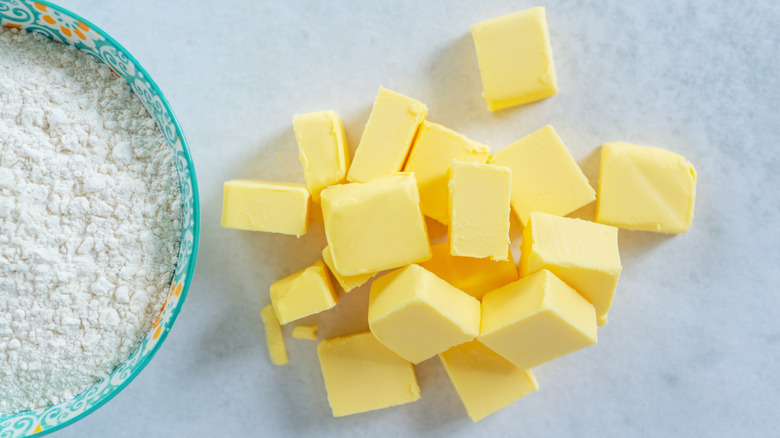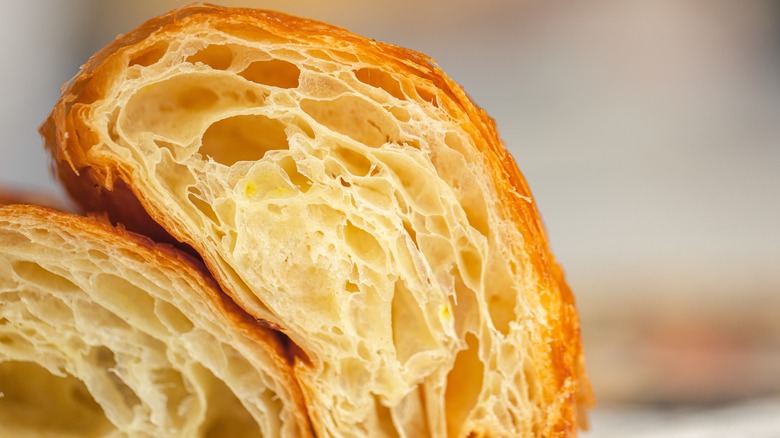Why Some Pastry Recipes Call For Cold Butter
Room temperature, melted, or cold — butter comes in all shapes and forms. While it's tempting to believe that each form of butter is interchangeable, this line of thought may actually inhibit your baking. When it comes to butter, it's imperative to not only obey your recipe's butter measurements but also abide by your recipe's butter temperatures.
The proof is in the pastry. Different kinds of desserts call for different forms of butter. Melted butter, for instance, enhances the fudgy texture of cookies. Meanwhile, room-temperature butter serves all kinds of purposes, though it works especially well in making homemade buttercream.
Other recipes hinge on keeping your butter cold. If you're making a pie, a batch of scones, or lemon curd, cold butter is the key to achieving your desired texture. It's easy to overlook or ignore guidelines for butter temperature if you're in a rush or want to use whatever you have on hand. However, it's important to think twice before you pick up that stick that's been warming on your counter. Cold butter is the secret weapon to making laminated and flaky pastries. It, therefore, has the potential to make — or break — your dessert's texture.
Thank cold butter for the layered texture of croissants, biscuits, and pain au chocolat
Ever wonder how croissants get all those beautiful, pull-apart layers? How do scones wind up perfectly buttery and flaky? And how do biscuits achieve that bready, yet tender, texture? Well, when it comes to baking these flaky pastries, here's a simple trick: the colder the butter, the better the texture.
Butter has to be cold — and therefore as solid as possible — to create layers in any given dough, per King Arthur Baking. If your butter is too warm, it will merge with and melt into your dough. So, you have to keep the butter cold both at the start of the baking process and at every stage within. The same rule applies to pastries like scones, pie crusts, and biscuits, which are all characterized by the same buttery consistency.
Of course, cold butter can be difficult to work with. So, to ease the baking process, you can alter your butter's texture rather than temperature. Use your fingers to mix chunks of cold butter into your scone mixture. Or, opt for a rolling pin to flatten a sheet of cold butter over your croissant dough. Either way, keep your butter cold and your pastry won't falter. Just don't beat cold butter with your mixer, and you'll have pâtisserie-worthy desserts in no time.

